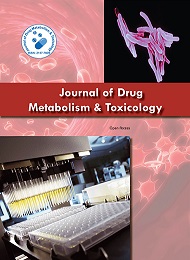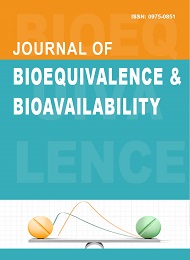
3rd International Conference and Expo on
Biopharmaceutics and Biologic Drugs
3rd International Conference and Expo on Biopharmaceutics and Biologic Drugs
Theme: Innovations in Biopharmaceutical drug discovery {CME-CPD Accreditations Available}
Biopharma 2022
Conference Series LLC Ltd invites all the participants from all over the world to appear in '3rd International Conference & Expo on Biopharmaceuticals and Biologic Drugs ’ during October 04-05, 2022 in Stockholm, Sweden which includes prompt keynote exhibitions, Oral talks, Poster presentations and presentations. ConferenceSeries Ltd arranges a conference series of 1000+ Global Events inclusive of 600+ Conferences, 500+ Upcoming and Past Symposiums and Workshops, all over the world, with the support of 1000 more Scientific societies and publishes more than 700+ Open Access Journals which comprises of over 50000 well-known personalities, reputed scientists as editorial board members.
The Biopharma 2022 offers a best platform with its well organized scientific program to the audience which includes interactive panel discussions, keynote lectures, plenary talks and poster meetings on the areas Biopharmaceutics, Drug delivery system, Novel Approaches in Biopharma, Clinical Trials on Biopharmaceutical Products, Analytical Characterization of Biotherapeutics, current problems in Bioequivalence of Oral Products, Biosimilars and Biologic Drugs, modern scientific approaches to international regulatory standards. The conference calls delegates from Biopharma laboratories, Pharmacists, Academicians, Clinicians, Researchers, Health care professionals, students, business delegates and Young researchers across the globe providing a better platform, interrelating the modern research, technological advances in the arena as well as therapeutic aspects.
Why to Attend:
With all the scientific people over the world concentrated on learning about developments in Pharma community. This is a best globalized chance to reach the largest assemblage of participants. We anticipate participants, renowned speakers and eminent delegates, worldwide attending the conference to share their valued presentation and galvanize the scientific community. Biopharma 2022 is a 2-day event offering to conduct presentations, distribute information, meet with potential scientists, make a splash with new developments, and receive fame and recognition. Renowned speakers, the most recent and advanced techniques, developments, and the newest updates are the prominent characteristics of the conference. The conference provides a stage to showcase the research works of pharmacy skills from various scientific backgrounds and the same can be professed by young researchers and students. The conference mainly aims to broadcast knowledge on Biopharma & Biotherapeutics. International conference on Biopharma & Biologic Drugs would be a perfect venue to share and grow knowledge.
Target Audience:
Directors & Business Intelligence consultants, division managers, Administrators & whole manufacturers or marketers of client product. Retailers, Marketing, Advertising and Promotion Agency Executives, answer suppliers (digital and mobile technology, P-O-P style, retail style, and retail execution), Professors and Students from world within the study of promoting and Advertising filed.
Track 01: FOOD AND DRUG ADMINISTRATION
Located under the Department of Health and Human Services, the Food and Drug Administration (FDA or USFDA) is a federal organisation. The FDA is in charge of ensuring the safety of food, tobacco products, dietary supplements, prescription and over-the-counter medications, vaccines, biopharmaceuticals, blood transfusions, medical devices, electromagnetic radiation emitting devices (ERED), cosmetics, animal foods & feed, and veterinary products in order to protect and advance public health. The lack of immunization in developing countries is undoubtedly the most serious consequence of the difficulty in accessing traditional vaccination systems. The World Health Organization (WHO) has aimed to find low-cost vaccines, which are accessible to the population and are easy to store and distribute without the need for refrigeration.
Track 02: THE CHEMISTRY OF FOOD
The study of chemical reactions and interactions between all biological and non-biological components of food is known as food chemistry. As examples of biological substances, consider foods like beef, poultry, lettuce, beer, and milk. In terms of its primary constituents, such as carbs, lipids, and protein, it is comparable to biochemistry; however, it also encompasses elements like water, vitamins, minerals, enzymes, food additives, tastes, and colours. This field of study also includes measures to improve or prevent the way products change when subjected to specific food processing methods.
Track 03: DRUG ELIMINATION
Drug elimination is a process which involves irreversible removal of drug from the body from all routes of elimination. Drugs are eliminated from the body by various elimination processes and usually categorized into two major components: excretion and biotransformation. The declining plasma drug concentration which is observed after systemic drug absorption shows that the drug is eliminated from the body but it does not indicates the process involved in elimination.
Track 04: PHARMA INNOVATIONS IN 21ST CENTURY
Pharmaceutical manufacturing operations are ineffective and expensive. Compared to other industrial sectors, the rate of overview of modern manufacturing process, design theories, new dimension and control skills, and knowledge management systems is very low. Chances for increasing productivity and quality assurance through an upgraded focus on design and control, from an engineering viewpoint, are not generally well recognized. Quality and productivity development share a mutual element -reduction in variability through process understanding. Decreasing variability provides a "win-win" occasion from both public health and industry angles. And, since pharmaceutical product manufacturing technologies and practices are generally similar between both innovator and broad companies, facilitating efficiency advances provide opportunities for both segments of the pharmaceutical industry. A proficient and secure US pharmaceutical manufacturing sector will be essential in the 21st Century.
Track 05: FORMS OF DRUG DELIVERY SYSTEM
For dosage forms, the drugs are distinguished into different categories by categorizing them on the basis of their physical state which is gaseous (such as anaesthetics), liquid (e.g. solutions, emulsions, suspensions), semisolid (e.g ointments, gels, creams and pastes) and solid dosage forms (e.g. powders, granules, tablets and capsules). Most dosage forms comprises of several phases. However, more often these dosage forms comprises of phases from different states. Therefore, classification into gaseous, liquid, semisolid or solid dosage forms may sometimes appear illogical.
Track 06: NANOPARTICLES- AN INNOVATIVE DRUG DELIVERY SYSTEM
Nanomedicine and Nano-delivery systems are a comparatively new but rapidly emerging science where materials in the nanoscale series are employed to serve as means of analytical tools or to deliver beneficial agents to definite targeted sites in a organized manner. Nanotechnology suggests multiple profits in treating chronic human diseases by site-specific and target-concerned delivery of precise medicines. Nanoparticles have an ability to cross physiological barriers and access different tissues, and also be provided in a specified form aimed at increasing cell specificity of the carrier. Recent advancements within material science and strong collaborative efforts crossing disciplinary borders have emphasized the potential of mesoporous silica nanoparticles (MSNs) for such targeted drug delivery.
Track 07: BIOLOGIC DRUGS
Biologic Drugs, are medications genetically engineered from a living organism, such as a virus, gene or protein, to mimic the body’s natural response against infections and diseases. Biologic drugs targets specific proteins, cells and pathways which are responsible for the symptoms and injury of rheumatoid arthritis and other types of inflammatory arthritis. The proteins which are targeted include tumor necrosis factor (TNF), interleukin-1 (IL-1) and interleukin-6 (IL-6), which are responsible in joint inflammation. Biologics are characteristically used for people whose arthritis has not been answered well to disease-modifying antirheumatic drugs (DMARDs).
Track 08: BIOLOGICAL MEDICINES
Biological Medicine is involved with the biology of the body and its natural healing abilities as well as the spiritual, emotional and physical phases of a disease. Dis-ease means that the body’s regulation is not performing properly and needs to be brought back into its natural active phase where the immunity is in full regulation. It therefore, looks for main causes for knowing the symptoms of disease- the basic factors causing a person to present with a certain illness. These root causes consists of several factors which have built up over time and includes; diet, food allergies, intestinal problems, stress, environmental factors, dental problems, oral problems, hyperacidity, trauma, exposure to bacteria or viruses.
Track 09: SOLUBILITY ENHANCEMENT
A variety of approaches can be used to improve the solubilization and bioavailability of a medication that is poorly water soluble. In screening tests of new chemical entities, as well as formulation design and development, solubilization of poorly soluble pharmaceuticals is a common difficulty. Any medicine that needs to be absorbed must be in the form of an aqueous solution at the absorption site. The maximum amount of solute that may be dissolved in a given amount of solvent is defined as'solubility.' It is defined quantitatively as the solute concentration in a saturated solution at a given temperature. Solubility is defined as the spontaneous interaction of two or more substances to generate a homogeneous molecular dispersion in qualitative terms. A saturated solution is one in which the solute and the solvent are in equilibrium. A drug's solubility can be expressed in a variety of ways, including parts, percentages, molarity, molality, volume fraction, and mole fraction. The science of establishing new methods, standards, and approaches to evaluate the safety, efficacy, quality, and performance of all FDA-regulated products is known as regulatory science.
Track 10: BIOWAIVER
In vivo bioavailability and/or bioequivalence investigations may be waived with a Biowaiver (not considered necessary for product approval). A dissolution test could be used as a surrogate basis for determining whether two medicinal items are equal instead of expensive and time-consuming in vivo trials. At the time, the Biowaiver was only used for pharmaceutical scale-up and post-approval adjustments (SUPAC).
Track 11: REGULATORY SCIENCES
Regulatory science is the science of creating new tools, standards, and methodologies to evaluate the safety, toxicity, and efficacy of all FDA-regulated products, as well as their quality and performance. An method to building regulatory science programmes that builds on what has been learned in developing training programmes for translational scientists, and this model for regulatory science programme development is being refined and adopted by all of the CTSA network's institutions. The target audience for such a programme is broad, and it is vital to break free from the belief that regulatory science is solely under the control of FDA, and that the field's responsibility is to train a workforce that will work within FDA's constraints.
Track 12: PROTEIN INTERACTIONS AS TARGETED THERAPEUTICS
Protein–protein interactions between membrane-localized receptors and intracellular signalling molecules regulate neuronal function and, in theory, provide a rich source of drug discovery targets in neuropsychopharmacology. The flat, expanding, and adaptive shape of the protein–protein interface, in contrast to the well-defined binding pocket of transporters and receptors, offers a significant hurdle to the goal of discovering small compounds that cause a gain or loss of function of the protein–protein complex. This is countered by mounting evidence that a few amino acids near the interface ('hot spot') account for the majority of the binding energy in protein–protein interactions, implying that highly targeted modulators could be produced.
Track 13: CURRENT ISSUES IN BIOAVAILABILITY & BIOEQUIVALENCE
When administered at the same molar dose of the therapeutic ingredient under similar experimental conditions in either a single dose or multiple doses, the rate and extent of absorption of the test drug does not show a significant difference from the rate and extent of absorption of the reference drug. Should the rate of absorption varies amongst products, it must be deliberate and stated in the proposed product label, and it must be clearly proved that it is not necessary for achieving effective body drug concentrations on chronic usage or that it is medically irrelevant for the drug. In practise, equivalence is defined as when key pharmacokinetic parameters required to determine the rate and scope of the test, as well as reference products, fall within a predetermined confidence interval. If a drug product is pharmaceutically comparable to the innovator product, meaning it has the same active ingredient, dosage form, strength, and method of administration, and is bioequivalent, the FDA determines it to be therapeutically equivalent. Therapeutically identical products can be used interchangeably. As a result, BE studies are viewed as surrogates for comparative clinical trials in order to determine therapeutic equivalence in terms of safety and efficacy between two pharmacological candidates.
Track 14: HERBAL DRUG INTERACTIONS
Herbal drug interactions are a major concern in the practise of herbal therapy. There have been few instances of herb-drug interactions up until now, but since the first such reports a decade ago, there has been concern that we know so little about herbs and their potential for drug interaction that these incidents could be only the "tip of the iceberg." Almost all medical writers who evaluate the literature acknowledge the modest number of cases, but agree that herb-drug interactions are a major problem that needs to be investigated further. In a few cases, the interactions may have resulted in serious repercussions. Examples: Increase or reduce the effectiveness of a blood thinner like Warfarin, which can result in bleeding or the creation of a deadly clot; Reduce the effectiveness of a blood pressure medication, resulting in high blood pressure and a stroke; Reduce the effectiveness of an anti-infection agent, allowing an infection to spread out of control; or Increase the effectiveness of an anti-diabetes drug, resulting in dangerously low blood sugar levels.
The rising frequency of chronic diseases such as diabetes, rheumatoid arthritis, cancer, and multiple sclerosis has resulted in a huge increase in demand for biotherapeutics. This increase in demand for biotherapeutics, combined with the upcoming launch of many biopharmaceutical medications, has resulted in a significant increase in demand for cell line development.
Unmet medical demands in Asia Pacific, Latin America, and Africa, on the other hand, are projected to present profitable prospects for market players in the coming years. The global market for biotherapeutics cell line development is expected to grow from US$56 million in 2016 to roughly US$100 million by 2022, with a CAGR of 7.50 percent between 2017 and 2022. In the global market for biotherapeutics cell line development, North America has taken the lead. The opportunity in this region was valued at US$23.5 million in 2016, and it is expected to grow to US$41 million by the end of 2022. Europe, which came in second place in this market in 2016, is predicted to continue to rise steadily in the coming years. However, Asia Pacific, which ranked third in 2016, holds the future of cell line discovery in biotherapeutics. The fact that Asia Pacific is predicted to grow at the fastest rate of 9.40 percent during the forecast period demonstrates the region's potential. The region's biotherapeutics cell line development is expected to be accelerated by unmet medical demands and increased investments by large pharmaceutical corporations.
The biopharmaceutical industry's future looks bright, with biotech companies focusing more on innovation and technology developments and pharmaceutical corporations increasingly interested in getting into the biotech market. From 2016 through 2022, this graph depicts global diabetes spending in developed and so-called pharmerging markets. The established Biopharma market spent 35 billion USD in 2015. The increase in spending is fueled, among other things, by the increasing in the United States. New diabetic medicines are a primary driver of market growth in developed markets.
We would like to express our gratitude to all of our fantastic Keynote Speakers, Speakers, Conference Attendees, Students, Media Partners, Associations, Sponsors, and Exhibitors for helping to make the Biopharma 2021 Conference a success!
The Conference Series LLC Ltd presented the 2nd International Conference & Expo on Biopharmaceutics and Biologic Drugs from August 2-3, 2021 in Copenhagen, Denmark. The Organizing Committee Members, as well as scientists, researchers, students, and leaders from many sectors of biopharmaceutics, biotech, medical, and pharmacy, gave generous responses and active involvement, making this event a huge success. Conference Series LLC Ltd expresses its profound gratitude to organisations such as Pharma Voice, Event listing sites, and other notable individuals that helped promote the conference through various online and offline channels, allowing it to reach every part of the globe. The meeting consisted of several sessions in which the following important scientific tracks were discussed:
- Drug Discovery
- Advances in Pharmaceutical Packaging
- Globalized Pharma Sector
- Digital Pharma
- Regulatory Requirements for Pharmaceuticals
- Clinical Trials and Regulatory Affairs in Pharmacy
- Smart Drug Delivery Systems
- Peptides and Protein Drug Delivery
- Drug Safety and Pharmacovigilance
- Pharmaceutical Biotechnology
- Pharmacogenetics and Genomics
- Drug Development
Conference Highlights
- The Chemistry of Food
- Drug Elimination
- Pharma Innovations in 21st century
- Forms of Drug Delivery System
- Nanoparticles- An Innovative Drug Delivery System
- Biologic Drugs
- Biological Medicines
- Solubility Enhancement
- Biowaiver
- Regulatory Sciences
- Protein Interactions as Targeted Therapeutics
- Current Issues in Bioavailability and Bioequivalence
- Food and Drug Administration
To share your views and research, please click here to register for the Conference.
To Collaborate Scientific Professionals around the World
| Conference Date | October 04-05, 2022 | ||
| Sponsors & Exhibitors |
|
||
| Speaker Opportunity Closed | |||
| Poster Opportunity Closed | Click Here to View | ||
Useful Links
Special Issues
All accepted abstracts will be published in respective Our International Journals.
- Journal of Bioequivalence & Bioavailability
- Clinical Pharmacology & Biopharmaceutics
- Journal of Drug Metabolism & Toxicology
Abstracts will be provided with Digital Object Identifier by















